
The European market potential for groundnuts
The European market for groundnuts is predicted to grow stably in the long term. Above-average growth is expected for both in-shell and dry-roasted peanuts. This growth will be driven by changes in consumer consumption patterns, including rising demand for healthier snacking options. The Netherlands, United Kingdom, France, Spain and Poland offer the best opportunities for suppliers from developing country.
Contents of this page
1. Product description
Groundnuts, also called peanuts, are widely consumed in the European market. They can be used in a wide range of food products. They are sold in either pod or kernel form. Groundnuts are not real nuts, but a domesticated legume that belongs to the Arachis hypogaea species. They are often classified as both a grain legume and an oil crop due to their high oil content. For trade and food consumption purposes, groundnuts are mostly grouped with real nuts and not with legumes.
Peanuts can be grown in most soils, except in saline ones because they have low salt tolerance. It is a self-pollinated crop with a growing period of about 5 months. Some countries, such as Brazil, can grow two crops per year. Groundnuts have a fatty acid and nutrient composition very close to oilseeds. The crop is cultivated for direct human consumption, high-quality edible oil and animal fodder.
There are two main types of groundnuts used in Europe: Runner and Virginia. Two other types are Spanish and Valencia-type peanuts. Runners are smaller and mostly used for peanut butter production as they have a stronger flavour. Virginia peanuts are larger and often used for roasting and snacking. Spanish peanuts are smaller and have high oil content. This is important for confectionery and snacks.
Figure 1: Harvested groundnuts in shell
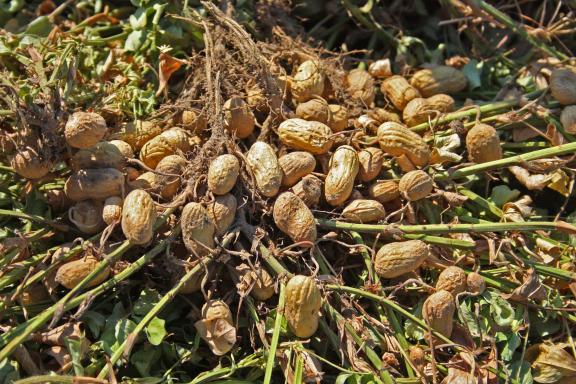
Source: ‘Peanut Plant Harvest’ by Alabama Extension, is marked with CC0 1.0
Virginia groundnuts are sought after for their size and flavour in the snack and gourmet sectors. They are very sweet and can be roasted and sold in the shell. Exporters should understand the target market and consumer preferences. Runner groundnuts are suitable for large-scale processing. Virginia groundnuts cater to consumers who value premium quality, taste and appearance.
This study covers raw and roasted groundnuts, as well as processed groundnuts such as peanut butter. However, the study does not cover groundnut oil as this is a different market with different players. Table 1 provides an overview of covered products with their Harmonized System (HS) product codes.
Table 1: Important traded products from the groundnut product group in Europe
|
Combined Nomenclature Number |
Product |
|
12024100 |
Groundnuts in shell |
|
12024200 |
Shelled groundnuts |
|
20081110 |
Peanut butter |
|
20081191 |
Prepared or preserved groundnuts in packing > 1 kg net |
|
20081196 |
Roasted groundnuts in packing ≤ 1 kg net |
|
20081198 |
Other prepared or preserved groundnuts in packing ≤ 1 kg net |
Source: Trade Map, Autentika Global
Groundnuts are native to South America, where they were first domesticated. From there, they spread around the world through trade and exploration, eventually becoming an important crop in Africa and Asia. In 2021, they were grown in 110 countries in tropical and sub-tropical regions. Total groundnut production was estimated at over 50 million tonnes (in-shell basis) in 2021 and 2022, according to the International Nut and Dried Fruit Council (INC).
Asian farmers harvested 59.6% of all groundnuts, followed by African growers, who accounted for a 30.3% share. The Americas accounted for 10% of global production in 2021, according to the FAOStat database. The leading producing countries are China, India, Nigeria, the United States, Sudan, Senegal, Myanmar, Argentina, Guinea and Chad.
A successful peanut harvest requires a climate that provides 160-200 frost-free days, with the ideal temperature range falling between 25 and 30ºC. In the northern hemisphere, peanuts are typically planted in April or May. Tropical wet regions, like Western India, can cultivate two crops per year. The southern hemisphere’s planting season typically runs from October to December. In the northern hemisphere, harvesting is commonly performed between September and November and between February and May in the southern hemisphere.
Figure 2: Groundnut harvesting
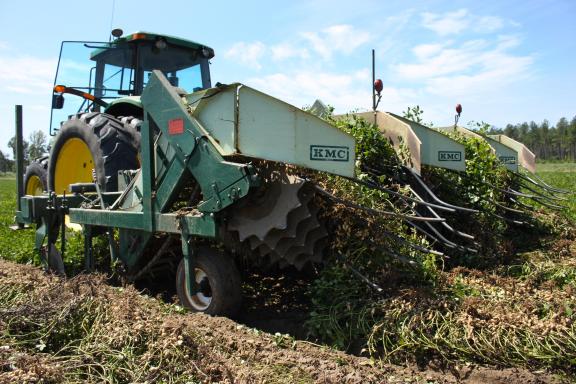
Source: ‘Harvesting Peanuts Using Tractor with Shaker’ by Alabama Extension is marked with CC0 1.0
In the European market, groundnut kernels are mainly consumed as roasted or fried savoury snacks. They are also sold to consumers in-shell, as less-processed food is increasingly popular. European processors are also experimenting with different flavours and coatings to appeal to different consumers. Peanuts are used as an ingredient in peanut butter, in cakes and chocolates, as ice cream toppings and in home-made dishes.
Figure 3: Sorting groundnuts in skin for roasting
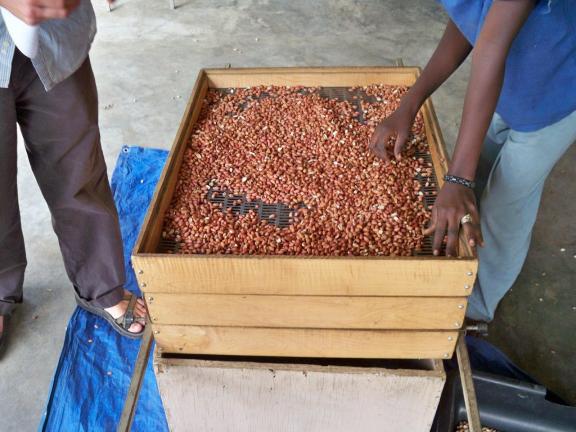
Source: ‘sorting peanuts for roasting’ by Engineering for Change is licensed under CC BY-SA 2.0, Photo credit: Cory Flanagin
Peanut butter is a food paste made from dry roasted peanuts. Peanut butter in the United States must contain at least 90% peanuts and contain no artificial sweeteners, colours or preservatives. In Europe, however, there is no official standard for peanut butter, and peanut content can vary from 50-100%.
Most groundnuts in international trade are packed into bulk packaging and exported as raw kernels. Aspects surrounding quality are described in more detail in the market entry part of this study. Processing operations (blanching, roasting or frying) usually take place in Europe, but some exporters perform processing for European buyers too.
2. What makes Europe an interesting market for groundnuts?
As Europe does not produce groundnuts commercially, it is a major import market. European imports from non-European suppliers rose at an average 2.6% rate (cumulative annual growth rate or CAGR) in volume terms between 2018 and 2022. In this report, ‘Europe’ refers to the EU-27, EFTA and UK markets.
In terms of volume, almost 80% of all imports arriving from outside Europe, came from developing countries in 2022. The term ‘developing countries’ is used in this report to denote countries on the OECD-DAC list of ODA recipients (PDF).
Over the next 3 years, the European market for groundnuts is expected to grow at a stable pace if inflationary pressures can be managed. The annual growth rate is likely to be around 2% in volume and 5% in terms of value. Import volumes could decrease if the high inflation seen in many European countries in 2023 carry over into 2024 and beyond.
Events will also depend on the price of other nuts, as demand for groundnuts might benefit from consumers purchasing fewer expensive nuts. Import rates will mostly depend on crop volumes and prices. Greater demand for snacks, vegan products, natural and raw food will continue driving demand for groundnuts in the longer term.
Source: Autentika Global, GTA, 2023. * Groundnut products from Table 1
Between 2018 and 2022, European annual imports of groundnuts grew by 5.4% in value to €2.15 billion, and by 1.7% in volume to 1.24 million tonnes. European imports in 2022 mostly consisted of shelled, unprocessed groundnuts. They represented 72% of the imported volume and 60% of the imported value in 2022. Processed groundnuts accounted for 21% of imports in value and 33% in terms of volume. European imports of in-shell groundnuts accounted for 7% of total groundnuts imports in volume and value.
European imports from developing countries increased over the last 5 years, from 496,000 tonnes in 2018 to 677,000 tonnes in 2022. Between 2018 and 2022, the annual increase of European groundnut imports from developing countries was 8.1% in terms of volume and 12.9% in terms of value.
Traditionally, European buyers get most of their processed groundnuts from European suppliers. In 2022, more than 90% of imported processed groundnuts came from other European companies. However, new growth trends are evident in the processed groundnut segment. This is also the segment that has the most added value. The volume and value of processed groundnut exports to Europe from developing countries rose by around 22% annually between 2018 and 2022.
Groundnuts are imported to Europe throughout the year. Over the past 5 years, the highest volumes of groundnut were imported in the fourth quarter of the year, except in 2019, in which most were imported in the third quarter.
European peanut butter imports have increased at an average rate of 9.4% between 2018 and 2022. Imports have increased from 42,000 tonnes in 2018 to 60,000 tonnes in 2022. Most peanut butter is imported through intra-European trade. The Netherlands exported 44,000 tonnes of peanut butter to European buyers in 2022, thanks to the port of Rotterdam, which serves as a trade hub and processing centre. In 2022, Belgium shipped 6,700 tonnes to European buyers, while Germany and the UK exported around 3,200 tonnes each.
The largest non-European supplier of peanut butter to Europe in 2018 and 2019 was the United States, but its volumes fell by 35% between 2018 and 2022. India overtook the US as Europe’s main overseas supplier in 2020. India more than tripled its sales to Europe from 1,200 tonnes in 2018 to 4,100 tonnes in 2022. The country was Europe’s third largest peanut butter supplier in 2022, trailing only behind the Netherlands and Belgium.
Source: Autentika Global, GTA, 2023. * Groundnut products from Table 1
Figure 5 represents the apparent consumption of groundnuts in the six leading European markets between 2018 and 2022. These figures were calculated by subtracting exports from imports for each country. This method has some limitations. It does not directly measure per capita consumption. Factors like inventory changes, waste and non-food uses can affect the numbers too. The Netherlands is a big groundnut re-exporter, processor and consumer. Processing volumes are not included in the official statistics. This makes accurately tracking consumption difficult.
The EU-27 nations had an external trade deficit in groundnut trade amounting to 645,800 tonnes in 2022. The UK’s external trade deficit in groundnut trade amounted to 126,900 tonnes, while the EFTA countries had a deficit of 18,200 tonnes in 2022. Germany, the UK and the Netherlands remain the largest markets, measured by apparent consumption levels.
3. Which European countries offer most opportunities for groundnuts?
The Netherlands is a major entry point for Europe thanks to the port of Rotterdam. Germany has a strong food processing industry that demands raw materials. The UK has a significant market for peanut butter and roasted peanuts. These three markets have dominated the European landscape for many years.
France has a growing snack food industry that could benefit from more groundnut imports, while Spain has a strong food processing sector. Poland has a growing groundnut market, with imports growing steadily in recent years. This growth is driven by the country’s expanding food processing industry, producing for both domestic and other EU markets. Rising consumer demand for peanut products is also a major factor. Suppliers should focus on the specific demands and trends in each market.
Source: Autentika Global, GTA, 2023. * Groundnut products from Table 1
The Netherlands: the key destination in Europe
Although the Netherlands is a small country, it is a key entry point for products into the EU. Its importance is clear considering that it is the largest importing country within the EU and the second-largest exporter of agricultural products in the world.
China overtook the Netherlands as the largest global importer of groundnuts in 2020. The Netherlands remains Europe’s largest groundnuts importer with imports of 383,000 tonnes, worth €563 million in 2022. This is up by 27% in value and 13% in volume from 2021. Dutch volume imports increased by 1.7% annually in the 2018-2022 period. In 2021, Dutch imports contracted, following a sharp spike in demand for peanut butter and retail packs of peanuts in 2020. The spike was due to heightened at-home consumption during the COVID-19 pandemic lockdown.
In the coming 3 years, the Dutch market for groundnuts is likely to continue growing at a rate of 1.5% in volume and 5-6% in value. Demand could be affected if higher European inflation rates persist. Unless there are major unexpected shifts in demand, imports will mostly depend on harvests and prices. Prospects for groundnut exports to the Netherlands in the long-term remain strong. Strong vegan trends, paleo diets and a rise in healthy eating habits are favourable factors for long-term exports to the Netherlands.
The Netherlands is the main European transit country for imported groundnuts. In 2022, the country re-exported 63% of all imported groundnuts to other European markets. Specialised traders and agents perform these re-export activities, many of them located in Europe’s largest port of Rotterdam. The largest European groundnut market served by these commodity re-exporting companies was Germany, which had a 39% share in 2022. Other important buyers were France at 18%, Poland at 11% and the UK with a 7% share.
These Dutch re-exports of groundnuts involves either reselling imported unprocessed shelled nuts, or more processed products after roasting or frying. Some prominent market traders and agents are Alderaban Commodities, Rotterdam Commodity Trading B.V. (formerly Amberwood Rotterdam), Bohemia Nut Company and QFN Trading and Agency. Many Dutch companies also perform processing operations, including leading peanut butter processor Bredabest, Snack Connection, private label peanut butter processor Supperfood and Virgin Nuts.
The Dutch import market for groundnuts is very concentrated as the Netherlands imports 69% of all groundnuts from Argentina (264,000 tonnes in 2022). Argentina is a dominant player as it supplies good quality peanuts. Imports of unprocessed shelled groundnuts are on the rise, and they now account for 96% of Dutch imports. The Netherlands imported 82% of its groundnuts by volume from developing countries in 2022.
Processed groundnuts accounted for 3% of imported volumes in 2022. The largest suppliers were Germany, India and Poland, all of which shipped more than 2,000 tonnes to the Netherlands. Roasted groundnuts were the largest category with 5,900 tonnes, followed by peanut butter at 3,500 tonnes (mostly supplied by India and the UK). Some of the lower grade peanuts are also packed or mixed with seeds and sold as a bird feed.
EU trade in shelled and unshelled groundnuts with the US was briefly affected because of a dispute in the aviation industry. Import tariffs went up from 0 to 25% in late 2020. The import duty returned to zero on 15 June 2021. Peanut butter imports from the US were affected by a separate steel and aluminium dispute between the EU and the USA. These tariffs were removed after a bilateral deal was reached in October 2021.
The Dutch food processing industry in general is very mature, efficient and well organised, and it has access to multiple sources of food ingredients. Dutch food companies prefer to purchase food ingredients from specialised and experienced traders rather than sourcing directly from overseas markets.
Due to the high inflation in the post-COVID period, Dutch consumers are looking for products on sale and moving from branded products to private label products. The top-3 food retailers control almost 70% of market share. The trio includes Albert Heijn (37.0% market share), Jumbo (21.5%) and Lidl (10.1%).
The Dutch population is ageing, increasingly lives in cities and in smaller households, and is ethnically diverse. Product demand is shifting towards affordable convenience, greater variety and smaller packaging. There is rising demand for organic and sustainable products. Consumers are showing greater interest in healthy and nutritious food products and plant-based diets are becoming mainstream. There is a growing number of vegetarians, vegans and flexitarians (individuals looking for alternative proteins) in the country. All of this provides ample opportunities for groundnut suppliers.
The leading retail brand of peanuts in the Netherlands is PepsiCo-owned Duyvis. The Netherlands is known as the largest peanut butter (pindakaas in Dutch) manufacturing and consumer market in Europe. The leading national brand is Unilever-owned Calvé. As a rule, European peanut butter has a much less sweet taste than North American peanut butter.
Newer Dutch brands differentiate themselves by offering peanut butter with a different nutritional profile. De Pindakaaswinkel offers a variety of flavours, all made without added sugar or palm oil. Mister Kitchen’s offers vegan peanut butter without added sugar, palm oil or added flavours. Terrasana offers organic peanut butter, made from 100% peanuts using solar energy.
Figure 7: Dutch Calvé peanut butter/pindakaas
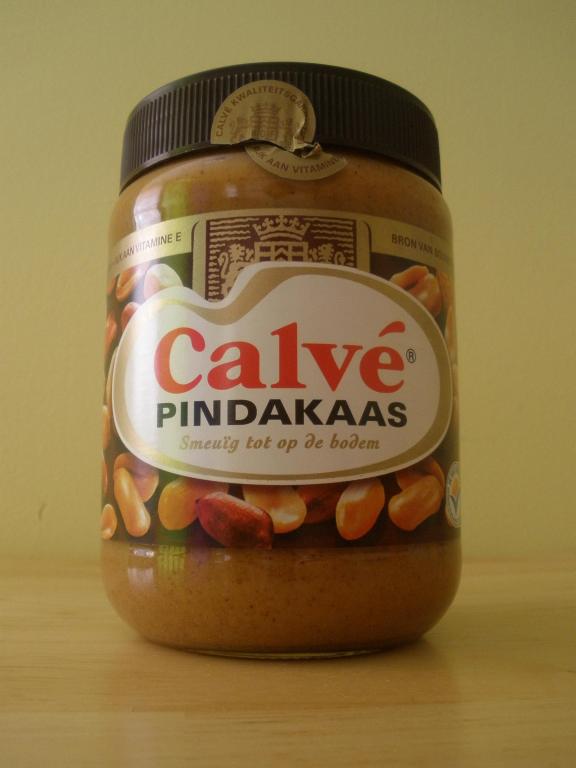
Source: ‘Peanut Butter‘ by christinejwarner is licensed under CC BY 2.0
The Netherlands imports 82% of its groundnuts from developing countries, mainly from Argentina. In 2022, the largest suppliers from developing countries were Brazil, China, Nicaragua, India and Egypt. Argentina boosted annual exports to the Netherlands by 80,000 tonnes in the 2018-2022 period. The USDA sees groundnuts as a product with good potential for the Dutch food ingredients market in its Food Processing Ingredients report (PDF) from April 2023.
Dutch consumption of groundnuts is boosted by rising consumer interest for healthy snacking and usage in the confectionary industry. Peanuts and peanut butter are naturally cholesterol-free. Groundnuts contain more protein than any other nut. They are also an excellent part of a plant food diet. Groundnuts also contain bioactive compounds like resveratrol, P-coumaric acid and phytosterols.
Figure 8: Groundnut-based salty snack

Source: ‘Peanut Snack’ by NIAID is licensed under CC BY 2.0
Tip:
- Contact the Dutch Southern Fruit Association (NZV) to learn more about the Dutch groundnut industry.
Germany: the third-largest consumer market in Europe
Germany has a very large and well-developed food industry that needs a wide range of ingredients. Cost is a primary concern for German buyers. Nevertheless, an increasing number of buyers are ready to spend more for better quality or for products that reflect their values (such as non-GMO, vegetarian or vegan), and they require clarity and details about how things are made.
Other growing trends include ethnic and clean label foods, superfoods, ‘free from’ items (such as gluten or lactose-free) and locally sourced goods. Sales of products for consumption to-go and snacks are on the rise. Only two thirds of consumers have breakfast at home, and 50% of people do not eat lunch at home.
Germany is an important importer and the third-largest market for groundnuts in Europe, measured by apparent consumption. German firms imported €290 million worth of peanuts totalling 164,200 tonnes in 2022. This was up 2.7% in value and down 5.6% in volume from 2021. Over the past 5 years, the value of German imports has increased by 1.7% annually, although volumes fell by 1.8% annually in the same period.
Germany’s groundnuts market should see continued value growth at around 2% annually, while volumes could remain stagnant based on recent trends. However, high inflation seen across Europe in late 2022 and 2023 could see more German consumers switching to more affordable groundnuts. Prospects for groundnut exports to Germany in the long-term (2026 and beyond) remain strong. Younger consumers are at the forefront of vegan trends, healthy nutrition and snacking, all of which benefit groundnut consumption.
Germany imported 114,000 tonnes from European suppliers (81,000 tonnes from the Netherlands) and 35,000 tonnes (including 18,800 tonnes from Argentina) from developing countries in 2022. Most imported groundnuts are consumed within Germany itself, but 28% are re-exported. German firms export most groundnuts to Austria, Luxembourg and Switzerland. Luxembourg has very low absolute consumption of groundnuts but is an important processor and packer of groundnuts, which are then re-exported to Germany after processing.
The German market for groundnuts is quite concentrated. In 2022, Germany imported almost 50% of its groundnuts from the Netherlands, followed by Argentina (11%) and the United States (8%). Developing countries supplied 21% of Germany’s groundnut imports by volume in 2022.
Germany imports around 63% of groundnuts shelled, 23% processed and 14% in-shell. Germany imports a much higher share of in-shell groundnuts than the Netherlands. More than half of the 23,500 tonnes of imported in-shell groundnuts in 2022 came from the United States. Egypt supplied a further 9,200 tonnes.
Developing countries increased their groundnut exports to Germany by 21% in volume in the 2018-2022 period, even though German imports fell. Imports from Egypt rose from 5,800 tonnes in 2018 to 9,300 tonnes in 2022. Exports from Nicaragua to Germany grew ten-fold to 4,500 tonnes in 2022.
Almost all the top-5 food retailers in Germany are discount supermarket chains. The 5 largest chains, ordered by size, are: Edeka/Netto, Rewe/Penny, Schwarz (Lidl/Kaufland), Aldi Nord/Sud and Metro C+C/Real. The top-5 retailers together account for around three quarters of the total revenue. However, small neighbourhood and convenience stores are witnessing a revival.
Figure 9: Lidl private label roasted in-shell and shelled groundnuts
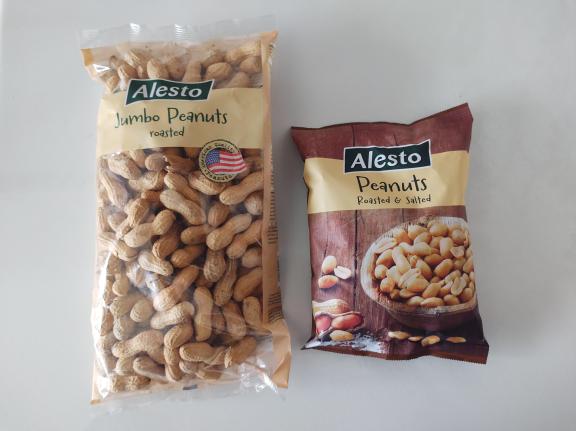
Source: Autentika Global
Most groundnut products in Germany are sold by private label brands (by discounters, such as Aldi Sud, Aldi Nord and Lidl). Significant quantities are also sold as unbranded snacks. The leading retail company brand is Ültje. Germany offers good opportunities for suppliers of organic groundnuts because it is the largest organic market in Europe. Some leading organic groundnut and peanut butter brands in Germany are Alnatura and biozentrale.
Figure 10: Lidl private label sweet and salty peanut snacks
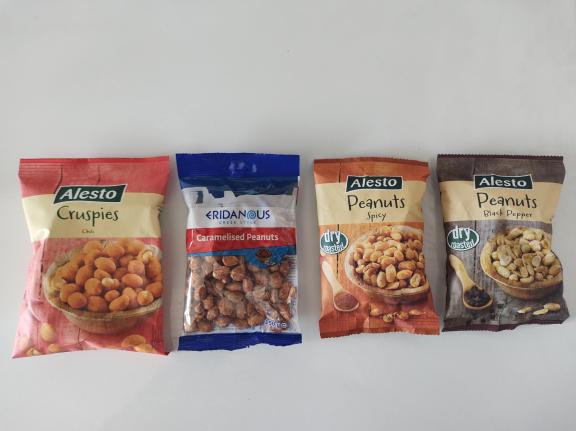
Source: Autentika Global
Examples of German groundnuts importers, processors and packers include Seeberger, ATCO, Farmer’s Snack, Omnitrade and Fresh Nuts.
Tip:
- Search for German groundnut traders on the website of the specialised trade promotion organisation Waren-Verein der Hamburger Börse and the German B2B platform Wer liefert was (wlw).
The United Kingdom: plenty of post-Brexit opportunities
The United Kingdom (UK) is a large market for groundnut exporters. The UK’s ethnic diversity leads to greater demand for peanut-based products used in ethnic cuisines. The UK is home to many small to medium-sized processors and packers with their own brands. Post-Brexit, the UK is looking to diversify its trade partnerships and reduce its dependency on the EU. This could give non-EU groundnut exporters an edge.
The UK firmly is the third-largest importer and the second-largest market of groundnuts in Europe. In 2022, the country imported 137,000 tonnes. Total groundnut consumption is estimated to be roughly 127,000 tonnes. The UK only re-exports around 10,000 tonnes of processed groundnut products, making it a different market to the Netherlands and Germany. The UK is mostly an end market, rather than a trading market.
The UK’s groundnut imports increased by 5.6% in value and 1.4% in quantity in the 2018-2022 period. The rise in the value of imports reflects a trend of higher commodity prices seen in this period. Short-term sales prospects may be affected by high inflation. In May 2023, the Bank of England forecast that inflation would stay higher for longer than previously expected. The UK’s inflation rate in 2023 was the highest in the G7 group of wealthy nations. The groundnuts market should see volume growth at around 1.5% annually, while value could rise by around 6%.
Longer-term (2026 and beyond) prospects for exports to the UK remain strong because the population is projected to grow and become more diverse as non-EU immigration continues to rise. Trends towards healthier, plant-based eating are set to continue. Groundnuts are used by many industries, including confectionery, snack foods and baking, all of which are well-established in the UK.
Argentina is the UK’s leading supplier to the UK with a 37% share in 2022, followed by the Netherlands as a transit country (16% share). Brazil supplied 13% of the UK’s groundnut imports by volume, as did the United States. Exports from Nicaragua accounted for around 10% of the UK’s imports. Developing countries supplied 64% of UK groundnut imports by volume in 2022.
Sustainability and ethical sourcing are important aspects for UK groundnut importers to consider. For example, Liberation Foods was the first UK-based Fairtrade nut and community interest company owned by smallholder farmers around the world that sustainably produce their peanuts.
Another important trend is the growing presence of plant-based diets. UK-based Whole Earth brand, owned by Kallo Foods, offers a variety of organic and natural peanut butters that align with plant-based diets.
Examples of groundnut importers in the UK are Humidger, Premier Fruit&Nut and The Roasting Company. Large users of peanuts in the UK also include producers of peanut butter, such as Meridian Foods. An interesting market segment for peanut suppliers in the UK is bird and animal feed, represented by companies like W&H Marriage & Sons, Kennedy Wild Bird Food and JKT Foods Europe.
Tip:
- To find UK groundnut importers, check the member list of the UK Nut Association. You will also find contacts for companies from France, the Netherlands and Germany.
France: a growing market for groundnuts
France is the fourth-largest European consumer and importer of groundnuts. The market is characterised by a relatively small number of independent players and large dominance of private label brands in retail sales.
French imports of groundnuts have shown a very strong uptick in the past 5 years. French imports grew by 4.5% in volume and 5.9% in value annually in the 2018-2022 period. Groundnut imports surpassed 100,000 tonnes in 2021 and settled at 101,000 tonnes, worth €205 million in 2022. The largest groundnut suppliers by volume in 2022 were the Netherlands with a 48% share, Argentina at 23% and Belgium with 13%. France imported 27% of its groundnuts from developing countries in 2022.
In April 2023, the USDA’s Foreign Agricultural Service (FAS) identified groundnuts as one of the top-10 food ingredient growth products (PDF) in France. French consumption of peanut butter has tripled in the past ten years to 14,000 tonnes per year. This is part of a growing trend towards consumption of plant proteins. New spread manufacturers are emerging, such as Nut Expert, which sells a range of peanut pastes and butters.
Big retailers’ private label brands are the main peanut snacks brands in the French market. The top-5 retailers are Carrefour, Auchan, E. Leclerc, ITM Enterprises and Casino. Independent peanut snack brands are represented by companies like Menguy’s, Benenuts and Vico.
Developing countries play a smaller role in the French market than in the UK. Direct supplies from developing countries have increased from 11,000 tonnes in 2018 to 27,500 tonnes in 2022. French-speaking Togo has tripled its groundnut exports from 500 tonnes in 2018 to 1,500 tonnes in 2022.
France’s groundnut market is likely to see continued volume and value growth of 4-5% annually over the next few years. Long-term prospects are good because France has a robust food and snack industry, which relies on peanuts. France, traditionally a country with structured mealtimes, has also seen a growing snacking trend.
Finally, France has a strong focus on sustainable agriculture and organic food products. If groundnut producers can align with these trends, this could give them an advantage. Jardin Bio, a leading organic French food brand, is illustrative of this trend. They offer sustainably sourced organic peanut snacks and butters.
Tips:
- To learn more about opportunities to supply France’s growing snack industry, consult the French association of appetisers. Search for large French retailers on the site of the country’s Fédération du Commerce et de la Distribution (FCD), that represents major retail companies in France.
- If you are not from a French-speaking country, consider engaging the services of French-speaking staff for easier penetration into the French market.
Poland: an important reseller of processed groundnuts
Poland has nearly caught up with France in terms of groundnut import volumes. Annual imports, measured by volume, rose by 5.3% between 2018 and 2022. Imports by value increased by 7.5% in the same period. In 2022, Polish imports amounted to 93,000 tonnes worth €149 million.
Poland imported 27% of its groundnuts from developing countries in 2022. The country’s largest supplier was the Netherlands with a 48% volume share, followed by Argentina at 23% and Belgium with a 13% share in 2022. Among developing countries, Togo almost tripled its exports of groundnuts to Poland, from 560 tonnes in 2018 to 1,550 tonnes in 2022. Around 82% of all groundnuts imported from Togo were in-shell.
Poland is also an important re-seller of groundnuts. Around 40% of imported groundnuts are re-exported to other European countries. Germany, Romania and Czechia are the leading export destinations. Bakalland is one of the leading trading, processing and packing groundnut companies in Poland.
The Polish economy has been negatively affected by the war in neighbouring Ukraine. Economic growth in Poland is likely to slow markedly to 0.7% in 2023, due to high inflation, monetary policy tightening and the ongoing fallout from Russia’s invasion of Ukraine. In 2024, the country’s growth is expected to strengthen to 2.6%, according to the World Bank. Long-term prospects are strong, as Poland has a significant food processing industry, and it has seen a growing trend towards healthier eating.
Tips:
- For more information about Polish companies, contact the Polish Chamber of Commerce.
- Consult experts from the Polish RoślinnieJemy group, which promotes sales of plant-based food products.
Spain: a direct importer from developing countries
Spain is an important European groundnut importer. Between 2018 and 2022, Spanish imports increased annually by 9.9% in value and 3.8% in quantity, reaching 63,000 tonnes and €113 million. Spain imports 48% of groundnuts from developing countries. The country’s largest supplier is Argentina, which has a 30% share, followed by China with 17% and the US with 17%. Nicaragua (890 tonnes in 2022) and Egypt (470 tonnes in 2022) are emerging developing-country suppliers.
Spain’s groundnut market is likely to see continued volume growth at around 8% annually and 4% in value over the next few years. Long-term prospects also remain strong as Spain has a robust food and snack industry that can provide demand for raw and processed peanuts. Groundnuts are used in many ways in the industry, such as in confectionery, baked goods, snack foods and even in traditional dishes. The main firms in the Spanish groundnut processing industry are Frit Ravich, Borges Agricultural & Industrial Nuts and Importaco.
Tips:
- See our study on Market Demand for Processed Fruit and Vegetables for more information about general developments of trade within the European edible nuts sector.
- For product and trend ideas in the Spanish market consult Importaco’s free resources. The firm offers a specialised peanut production catalogue, catalogue of peanut pastes and peanut catalogue.
4. Which trends offer opportunities or pose threats on the European groundnuts market?
The increasing demand for healthy snacking combined with innovative peanut product formats are the main driving forces behind the growing consumer interest in Europe. Sustainable and organic production trends also favour groundnut-producing countries as the groundnut crop can be produced in these ways. On the other hand, the main threat is the ability to successfully manage stricter European requirements for food products.
To find out more about general trends, read our study about Trends on the European Processed Fruit and Vegetables Market.
Sustainability surge and slowing demand for organic
‘Organic farming’ refers to a method of crop production that respects the natural life-cycle systems. In the context of groundnuts, organic farming involves the non-use of synthetic fertilisers and pesticides, and the use of crop rotation, natural pest control and other environmentally friendly practices.
Sustainability is a broader concept that encompasses not just environmental impact but also economic viability and social equity. Organic farming can be a part of sustainable agriculture because it uses methods that have a lower environmental impact than conventional farming.
Demand for organic and sustainably grown nuts and groundnuts has been on the rise in Europe in recent years. European consumers are increasingly aware of the positive environmental impacts and health benefits of organic food. This surge in organic food demand is tied to a growing concern for the environment, which is heavily influenced by climate change and a desire for healthier food choices. EU imports of organic tropical fruit, nuts and spices (PDF) increased by 7% in 2021 according to the European Commission.
More than half of surveyed Europeans confirmed that they had been eating more sustainably since the COVID-19 pandemic, according to new market research. Kerry Group’s research also showed that 51% of consumers in the foodservice said they were happy to pay more for sustainable options. Bear in mind that this attitude may have changed due to the recent high inflation in Europe.
The COVID-19 pandemic was also an important driver that boosted organic sales. However, sales of organic products in 2022 may be affected by surging inflation driven by energy costs and food prices. Recent estimates indicate that organic food sales in the EU may end up contracting by about 5% (PDF) in 2022. Sales in France and Germany, which together represent more than 60% of the total organic market in the EU, are forecasted to go down.
Lower disposable income and high inflation could negatively affect sales of organic groundnuts in 2023 and 2024, especially in markets with persistent inflation or with stagnant economies according to industry sources.
The long-term growth of the EU organic market is supported by the European Commission’s Green Deal strategy. However, small and medium exporters should keep in mind that sales in the organic market can be more affected by negative economic developments. This is because sales are primarily driven by consumer demand. Sustainability requirements for food products, such as groundnuts, rely less on consumer choice and more on the increasing prominence of sustainability-related regulation.
However, not all organic practices are sustainable if they require more water than conventional methods, for instance, or if the organic products are so expensive that they cease to be accessible to many. However, groundnut production is mostly free of these problems. Groundnuts are among the most affordable products in the nut sector. The commercial production of shelled groundnuts also requires much less water than almonds, pistachios and walnuts.
Groundnuts also have nitrogen-fixing properties. For example, groundnuts are used in Brazil in crop rotation with sugar cane to improve soil fertility and to lower fertiliser use after soil is depleted by the cane crop. Groundnuts help to replenish nitrogen in the soil, which results in lower application of costly fossil-fuel produced nitrogen fertilisers.
These favourable traits mean small and medium groundnut producers can market their product as more sustainable than other nuts. Research has shown that European consumers are willing to spend more on natural ingredients and sustainable production and packaging.
Groundnut firms can include organic and sustainable farming methods to grow or source their groundnuts to seize new opportunities in Europe. For example, Bolivia-based groundnut exporter Apromam has expanded its groundnut production model to include certified organic groundnut and groundnut snacks. Keep in mind that getting organic certifications in the European market can be costly and difficult.
Another example is the Indonesian company Lewi’s organic, which entered the European market with organic and premium wild striped peanuts (also known as ‘jungle’ peanuts).
Looking ahead, the overlapping and often parallel trends of demand for sustainable and organic groundnuts are likely to gain strength. European countries are in the process of strengthening regulations around food imports. This trend is driven by concerns about food safety, environmental impact and labour rights in the production process. This is consistent with a wider shift towards regulatory scrutiny in international trade.
Tighter regulations can pose a challenge for developing countries, potentially increasing the cost of compliance. However, meeting these standards could provide access to a larger market share. This could become a major market opportunity for SMEs in developing countries and a new entry point for accessing the European market.
New snacking options, innovative products and increased in-shell consumption
Nuts have a good reputation among European consumers. Groundnuts are considered a healthier alternative to other savoury snacks, such as crisps and extruded snacks. However, peanuts (due to their high oil content) used to be perceived as less healthy than tree nuts. Nevertheless, these views are being challenged by new research that shows that consuming groundnuts might be beneficial in the management of blood lipids.
Higher demand for in-shell groundnuts is also a result of the healthy snacking trend. In-shell groundnuts are not fried so they provide a more ‘natural’ option to consumers. In-shell consumption also offers the pleasure of opening shells (e.g. akin to pistachio consumption). European imports of in-shell groundnuts from developing countries increased from 27,700 tonnes in 2018 to 37,300 tonnes in 2022. In Europe, in-shell groundnuts were mainly sold during the end-of-year holiday season, but they are now available year-round.
To promote snacking and attract new consumers, firms are offering new products. Many new coated and roasted peanut products are being launched, often with innovative flavours. Even peanut butter is being re-imagined in squeezy packaging in combination with chocolate for consumption on the go.
Other novel products include peanut butter buttons as an on-the-go snack and protein bars with peanut butter for improved texture and taste. The Karamel Zeezout peanut butter by De Pindakaaswinkel is a popular product and is a combination of caramel, sea salt and peanut butter.
Food manufacturers also cater to the needs of consumers who want to increase their intake of plant protein and lower fat consumption. UK’s PBFit offers a peanut butter product with 87% less fat. This is done by pressing oil out of groundnuts before grinding them into a powder, which is turned into peanut butter by adding water.
With the advent of keto diets, companies and brands also market the high oil content of peanuts as an advantage. Groundnut kernels typically contain mostly (more than 70%) mono and unsaturated fatty acids, which are beneficial for health. Peanuts also contain many healthy fats like oleic acid and are a great source of vitamins and minerals. They also have as many antioxidant properties as many fruits.
With their busy lifestyle, many European consumers substitute traditional lunch breaks with healthy snacks with nuts as an important ingredient. Consumers also use groundnuts as an alternative protein source and contributor to texture in vegan/vegetarian diets, as a baking ingredient, salad mixes and so forth.
Tips:
- Explore the benefits of INC membership. As an INC member, you will get access to the INC statistics database and yearbooks, nut and dried fruit trade maps, tariff rates, regulations and a scientific database.
- Read the CBI’s Entering the European market for groundnuts study to learn more about the market channels and buyer requirements.
- Check the websites of European trade shows and exhibitions to discover the newest trends. The most important trade fairs in Europe for groundnuts are SIAL, Anuga and BioFach.
- Be aware that 0.2% of the entire European population is allergic to peanuts according to the European Centre for Allergy Research Foundation. Label all foods containing peanuts accordingly.
Autentika Global carried out this study on behalf of CBI.
Please review our market information disclaimer.
Search
Enter search terms to find market research
